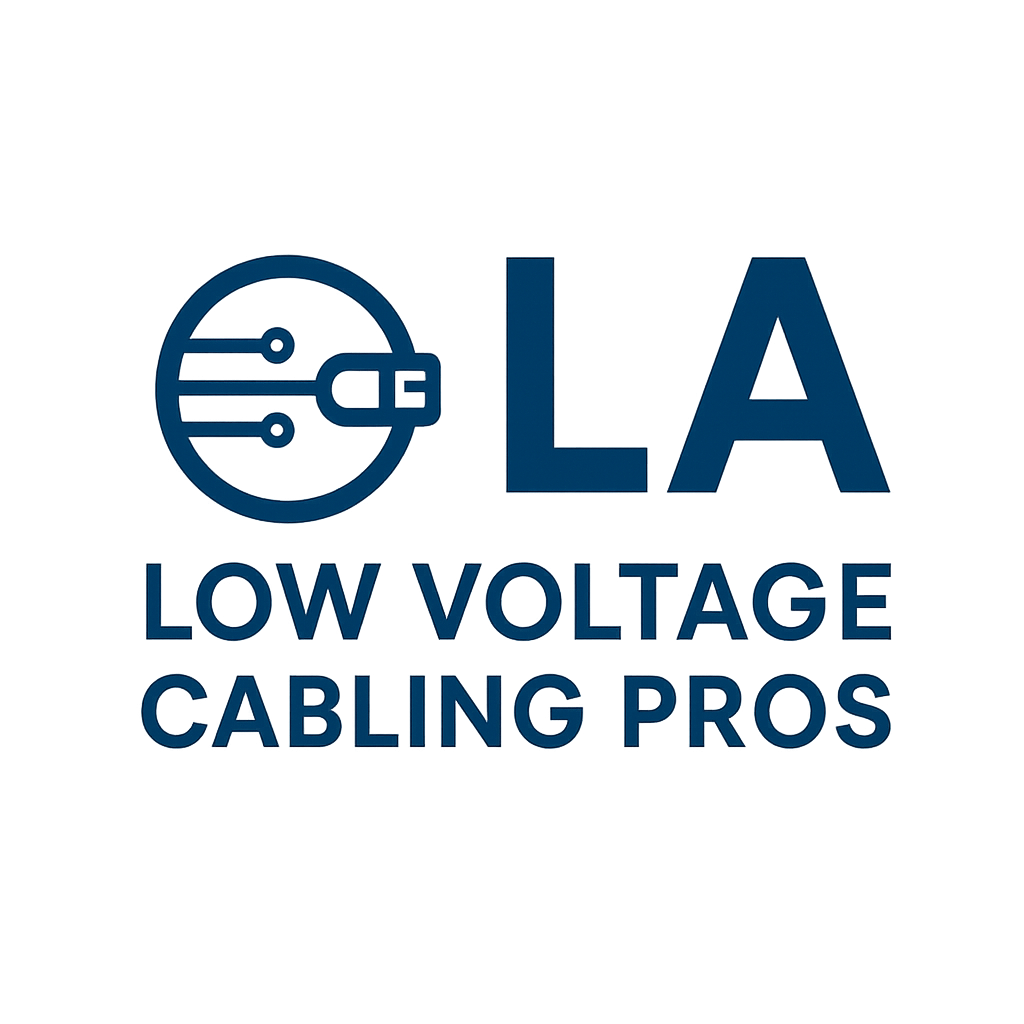Low Voltage Cabling Best Practices: How to Build a Reliable and Efficient Network
When it comes to modern connectivity, low voltage cabling is the invisible force powering your internet, security cameras, Wi-Fi, and communication systems. Whether you’re setting up an office network or upgrading your smart home, following proper cabling practices is the key to building a stable, safe, and efficient system. At LA Low Voltage Cabling Pros, we provide expert installation services to ensure your network operates efficiently and reliably.
This guide covers the most important low voltage cabling best practices to help you plan, install, and maintain your system for long-term performance.
What Is Low Voltage Cabling?
Low voltage cabling refers to electrical wiring that operates below 50 volts. It’s used for systems that don’t need high power but require reliable signal transmission, including:
- Internet and Ethernet networks
- Security cameras (CCTV)
- Access control systems
- Fire alarms and intercoms
- Audio-visual equipment
- Smart home devices
Unlike standard electrical wiring, low voltage cables carry data and communication signals — not electricity to power outlets or appliances. Because of this, proper installation techniques are crucial to avoid signal loss, interference, and safety hazards.
Why Following Best Practices Matters
Even small mistakes in cable installation can lead to major problems later. Poor cable management, excessive bending, or running cables near electrical lines can cause:
- Network interruptions
- Signal interference
- Reduced system lifespan
- Failed inspections or code violations
Following industry-approved cabling standards ensures your system performs consistently, stays organized, and remains easy to maintain.
1. Plan Before You Install
Every successful installation starts with a detailed plan. Before running a single cable, determine:
- The purpose of each cable (data, video, security, or voice)
- Pathways and routing (ceilings, walls, or conduits)
- Cable lengths and drop locations
- Compliance with local building and fire codes
A solid design reduces rework and helps ensure that your network supports both current and future needs. Following proper design principles is crucial—check out our guide to structured cabling in California for more detailed insights.
2. Use the Right Type of Cable
Choosing the correct cable type is one of the most important decisions in any low voltage project. Common options include:
- CAT5e or CAT6 – Ideal for Ethernet and data networks
- Coaxial cable – Used for CCTV or television systems
- Fiber optic cable – Best for high-speed, long-distance communication
- Speaker and alarm cable – For intercoms and audio systems
When in doubt, consult your installer or a structured cabling professional to ensure compatibility with your equipment and building design.
3. Keep Power and Data Cables Separate
Running low voltage cables parallel and too close to electrical wiring can cause electromagnetic interference (EMI). Always maintain at least 12 inches of separation between power and data cables.
When crossing paths is unavoidable, do so at a 90-degree angle to minimize interference. This simple practice keeps your signals clean and your network stable.
4. Avoid Sharp Bends and Tight Pulls
Cables have specific bend radius limits. Pulling or bending them too tightly can damage the internal wiring and reduce signal quality.
Follow manufacturer specifications and use smooth, gradual turns when routing cables through conduits or walls. A general rule: never bend a cable more sharply than four times its diameter.
5. Label Everything Clearly
Proper cable labeling saves hours during troubleshooting and upgrades. Label both ends of every cable with clear identifiers, such as:
- Room or port number
- Device name or type
- Cable function (data, CCTV, etc.)
Use durable labels that resist heat, dust, and fading. This small step creates an organized and professional installation that’s easy to manage.
6. Test and Certify Your Cables
Before finalizing any installation, always test and certify your low voltage cabling. Professional installers use specialized equipment to verify performance and detect hidden issues like:
- Continuity errors
- Crosstalk or interference
- Poor terminations
- Faulty connections
Testing ensures every line meets industry standards (ANSI/TIA-568, TIA-606) and delivers optimal performance from day one.
7. Follow Code and Safety Standards
Each state has its own requirements for low voltage wiring. In California and other states, cabling must meet local fire, electrical, and safety codes. That includes:
- Using plenum-rated cable in air-handling spaces
- Installing proper firestopping where cables pass through walls
- Securing permits when required for commercial installations
Working with a licensed low voltage contractor ensures full compliance and protects your investment.
8. Keep Documentation Updated
Accurate records of your cabling layout, test results, and maintenance history make future repairs and expansions much easier. Store your documentation digitally and update it whenever new lines are added or replaced. Implementing best practices can greatly improve performance and reliability—learn more about the benefits of structured cabling systems.
9. Hire Certified Low Voltage Professionals
Professional low voltage technicians have the training and tools to install cables efficiently and safely. They understand building codes, equipment compatibility, and structured cabling design principles that prevent long-term issues.
When choosing a contractor, look for:
- State-issued low voltage license (like California’s C-7)
- BICSI or manufacturer certifications
- Proven experience with similar projects
- Warranty and post-installation support
Build a Stronger Network with Smart Cabling Practices
Whether you’re installing a new network or upgrading an existing system, following these low voltage cabling best practices ensures better performance, safety, and longevity.
Professional installation not only keeps your system compliant but also maximizes efficiency for years to come.
For expert advice and certified installation, reach out to your trusted low voltage cabling specialists and get your project started the right way.
